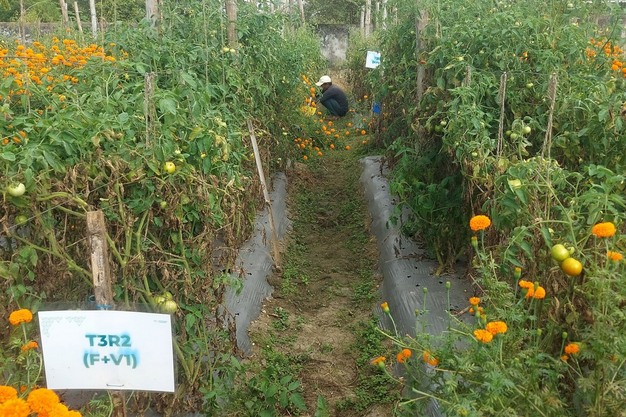The East West Seed Knowledge Transfer Foundation (EWS-KT) in which Koppert participates has had good results in treating bacterial wilt in tomatoes in India. The Centre of Excellence in Orissa, India, reports that trials showed that Koppert's biological strategy achieved more successful results than conventional farmers' practices in the region.
Bacterial wilt leads to substantial yield and income losses for tomato growers, and conventional chemical control methods are usually inadequate for controlling the disease. The trials were carried out in the Monsoon season when the disease is most severe. Farmers practices in this region of India include treatments with lime, copper and different synthetic fungicides. The Koppert strategy consisted of disinfecting the soil with Veni Goklean and recolonizing the soil with beneficial microorganisms present in Vici Routz.

Biological strategy results in 60-70% higher yield
The project aimed to test the effect of these biological solutions on bacterial wilt in two different tomato varieties commonly grown in India. Now that the tomato harvest has been completed, the Centre of Excellence says Koppert's solutions resulted in a lower disease incidence and higher yield.
'The results were clearly visible on the plants, both in disease incidence and disease severity,' the Centre of Excellence reports. 'In Koppert plots the tomato yield was 60-70% higher than in the farmers' practice for both varieties. A comparison of costs showed bacterial wilt control was 30% lower for the Koppert strategy than for the conventional methods. Farmers' practices even resulted in negative returns while with the Koppert strategy the returns were positive.'
For more information:
Koppert
[email protected]
www.koppert.com
